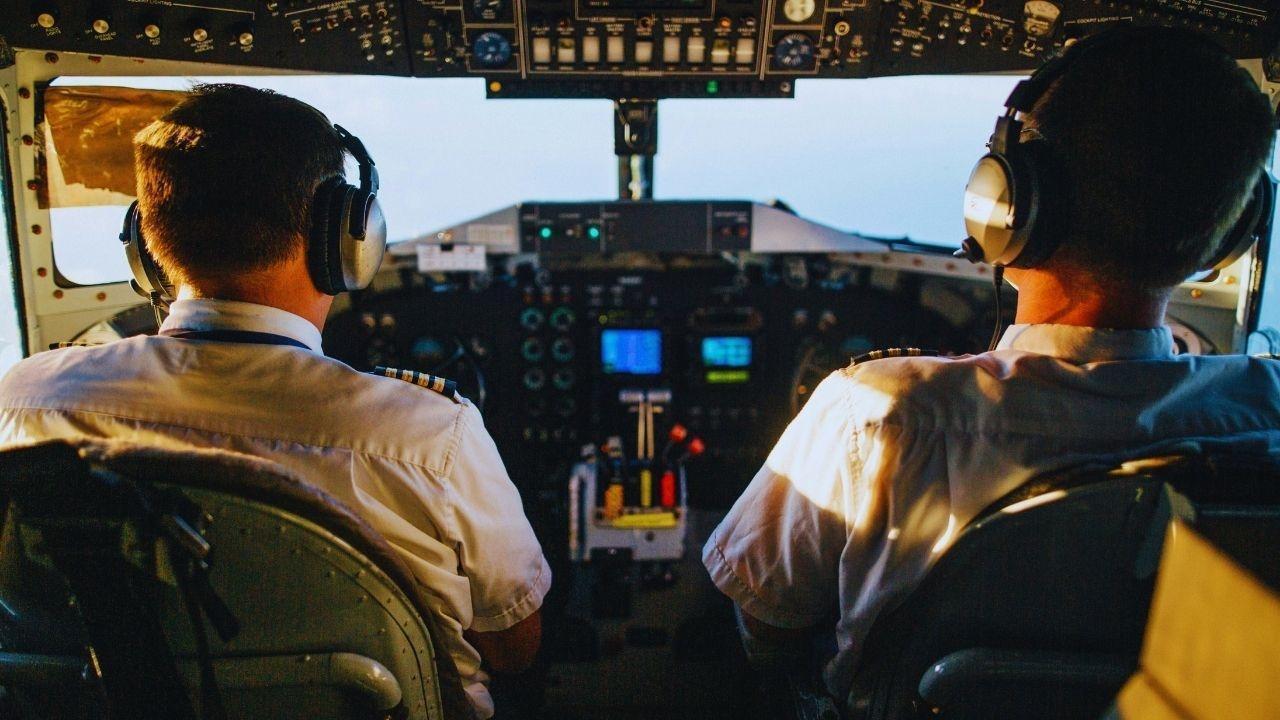
Join 10k+ people to get notified about new posts, news and tips.
Do not worry we don't spam!

Post by : Anis Farhan
Aviation relies on timing, exactitude and experienced crews. In 2025, however, one of the sector's most persistent challenges is a growing shortfall of pilots and dispatchers. Airlines worldwide—both passenger and cargo carriers—are confronting staffing gaps that jeopardise smooth operations.
To address these constraints, operators increasingly deploy artificial intelligence (AI) and decision support systems (DSS). These solutions bolster human expertise by delivering forecasts, optimised rosters and live operational recommendations rather than replacing professional judgement.
In a domain where split-second choices affect both safety and finances, AI has quietly become an essential assistant for teams on the ground and crews in the cockpit.
Air travel's bounce-back after the pandemic created demand that far outstrips the available pipeline of trained pilots. Retirements, postponed training programmes and career changes during pandemic years have contributed to a shortfall that analysts project could hit around 80,000 pilots by 2030.
Dispatchers—who manage route planning, weather evaluation and fuel calculations—face parallel pressures. Carriers must run leaner operations while continuing to meet strict safety and compliance requirements.
AI serves here as a cognitive partner, taking on heavy data processing so human specialists can concentrate on high-stakes decisions.
Decision support platforms powered by AI aggregate diverse aviation inputs—weather models, radar feeds, maintenance histories and crew availability—and analyse them in real time to highlight risks and suggest operational options.
Common applications include:
Flight Route Optimisation: Models cross-check live weather, traffic density and fuel consumption to recommend safe, efficient tracks.
Predictive Maintenance: Machine-learning tools forecast component issues ahead of failure, cutting down delays and cancellations.
Crew Scheduling: Algorithms balance fatigue indicators, legal limits and roster needs to produce fair, effective duty plans.
Such features let dispatchers act on robust analysis quickly while providing pilots with concise, actionable updates within their flight systems.
Dispatchers juggle shifting weather, crowded airspace and crew legality around the clock. Contemporary AI-driven dispatch suites automate many of those complex evaluations.
These tools run millions of scenario permutations in seconds—simulating diversions, maintenance events or airspace constraints—to surface the best reroute or mitigation option.
Automating routine decision trees frees dispatchers to concentrate on exceptions, strengthening operational resilience and safety oversight.
Predictive analytics is one of AI's most tangible contributions to operations: it identifies likely disruptions—severe weather, inefficient fuel profiles, or crew fatigue—long before they impact flights.
These forecasts are presented through intuitive dashboards used by both cockpit and ground personnel, functioning as an early alert system that supports proactive fixes instead of last-minute responses.
Airlines that have adopted predictive tools report benefits such as up to 12% fewer delays and around 18% lower operational costs, driven by earlier interventions.
Contrary to fears about automation displacing workers, AI in aviation is designed to amplify human capability. The principle is assistance, not substitution.
Pilots and dispatchers keep decision authority, while AI supplies rapid cross-checks of weather, diagnostics and regulatory constraints—tasks that would overwhelm any single person.
This partnership typically looks like:
Pilots using AI for situational context and adaptive routing cues.
Dispatchers relying on AI dashboards to prioritise work and forecast operational strain.
Humans remain the final arbiters; AI ensures those choices are informed and timely.
AI tools reduce repetitive administrative tasks that contribute to cognitive overload. Activities like reconciling logs or recalculating fuel after a diversion can be automated, delivering succinct summaries rather than raw datasets.
This lets professionals focus on judgement-heavy tasks and helps mitigate burnout—a pressing issue amid workforce shortages.
Additionally, fatigue-monitoring modules combine sleep records, duty length and environmental factors to flag potential safety risks before they materialise.
AI's reach goes beyond airlines into air traffic management and national regulators. Intelligent traffic-flow systems predict congestion and propose dynamic reroutes that make better use of airspace.
Linking ATC outputs with airline systems dissolves silos: cockpit crews and dispatchers receive consolidated, near-real-time updates, creating a coordinated ecosystem from tower to runway.
As skies become busier, this level of coordination is necessary to preserve capacity while upholding safety and efficiency.
Aviation-grade AI is built to meet stringent safety and ethical standards. Algorithms undergo extensive validation with historical flight records, simulated fault conditions and live trials.
Crucially, these systems favour transparency: they provide explanations for their suggestions—often called explainable AI—so operators understand the basis for each recommendation.
Black-box models have no place in regulated aviation environments that demand traceability, accountability and human oversight.
Several carriers have reported measurable gains after deploying AI-enabled DSS:
Delta Air Lines applies predictive maintenance that has lowered unscheduled ground time by about 15%.
Emirates leverages AI to optimise crew pairings and better align rest cycles for long-haul flights.
Singapore Airlines embeds AI across its dispatch network to strengthen real-time links between ground teams and flight crews.
These examples show how AI reshapes operational models rather than merely automating tasks.
In disruptive events—volcanic ash clouds, sudden storms or airport shutdowns—AI-driven DSS can be decisive. They analyse sensor and radar data and propose rerouting strategies in seconds to preserve continuity and safety.
During recent typhoons in Southeast Asia, some airlines credited dispatch AI with trimming diversion-related costs by nearly 20%, demonstrating the technology's adaptive value.
In cockpits, AI now supplements traditional autopilot functions, offering adaptive assistance drawn from live inputs.
When turbulence or wind changes occur, the system can suggest altitude or heading adjustments designed to preserve safety and efficiency. Pilots retain command, but gain computational foresight.
This hybrid model enhances awareness while safeguarding human authority and judgment.
AI also accelerates training. Machine-learning platforms personalise coursework for pilots and dispatchers, pinpointing weaknesses and simulating rare emergencies in a safe environment.
Such tools shorten learning curves and help new hires reach operational readiness faster—an important advantage amid staffing shortages.
AI-driven simulators can even replicate full dispatch operations, giving trainees exposure to complex decision-making before they manage live flights.
By trimming fuel usage, cutting maintenance delays and lowering the incidence of late departures, AI systems deliver tangible financial returns. A 2025 aviation technology survey found airlines using AI-driven DSS report average annual savings of $1.2 million per aircraft.
Optimised routing also supports sustainability goals by reducing carbon emissions—an increasingly important regulatory and corporate priority.
Despite progress, experts warn against blind reliance on AI. Output quality depends on input data, and novel situations can still baffle even advanced models.
Maintaining manual skills is vital: excessive dependence on automation risks eroding proficiency, a lesson seen previously in aviation.
Regulators such as the FAA and EASA therefore advocate for supervised autonomy, keeping humans central to oversight while leveraging AI as a robust aid.
Aviation's next chapter is collaboration between people and intelligent systems. Expect deeper AI integration across avionics, dispatch consoles and airspace management.
Future cognitive systems will anticipate crew needs, streamline communications and prepare flight plans that are near-autonomous until human clearance.
For an industry built on precision, that partnership may mark a new era of safer, more reliable air travel.
This piece is intended for informational and analytical use only. It does not constitute official aviation guidance or regulatory advice. Readers should consult certified aviation authorities for authoritative directives and compliance information.










India Wins First Women’s World Cup 2025 Title
India lifts its maiden Women’s World Cup 2025 title! Harmanpreet Kaur’s team stuns South Africa in a

Manuel Frederick, 1972 Olympic Bronze Goalkeeper, Dies at 78
Manuel Frederick, a member of India’s 1972 Olympic bronze hockey team, has died in Bengaluru at 78 a

Muhammad Hamza Raja Wins IFBB Pro Card Puts Pakistan & UAE on Global Stage
Pakistani bodybuilder Muhammad Hamza Raja earns IFBB Pro Card in Czech Republic, showcasing Dubai’s

Shreyas Iyer’s Recovery Underway After Spleen Laceration in Sydney ODI
Shreyas Iyer is recovering after a spleen laceration sustained while taking a catch in the Sydney OD

Qatar Ready to Host FIFA U-17 World Cup 2025 in Aspire
Qatar confirms full readiness to host the FIFA U-17 World Cup 2025 from November 3–27, with world-cl

Wolvaardt’s 169 Sends South Africa Into Women’s World Cup Final
Laura Wolvaardt’s 169 powered South Africa to a 125-run semi-final win over England, booking a place